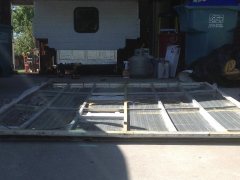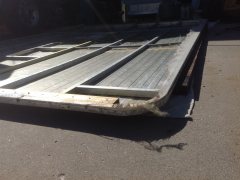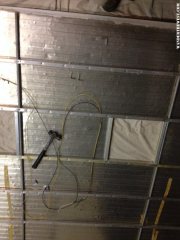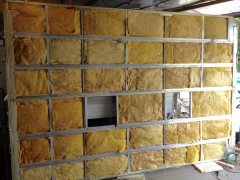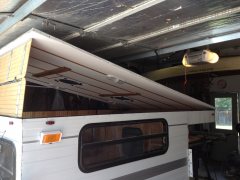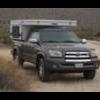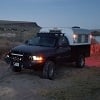Now that the OP has been answered, a few thoughts ...
Northbynortheast, I'm no expert, self anointed or otherwise, and can't speak for the mfr but I think the manual lift part of the roof would be a reason for not redesigning the rack to allow the carrying of much more weight. How the OP could lift 250lbs, I can't imagine.
A few years back FWC added struts as standard equip to aid in lifting - an acknowledgement I'd say, that even a fairly light load, like solar panels, could tax the user. Now that, thanks to the popularity of compressor fridges, solar is common on newer campers, I'm thinking fewer owners will have room up top for cargo and therefore the desire for increased load capacity.
I don't like the idea of a hundreds of pounds of weight up top because the roof is clamped to the side walls. The ability to give a little between the roof and walls probably helps the whole camper accommodate flex without cracking. If so, lighter is better than heavier.
I used to carry a spare tire on the roof, at the rear. I blame that weight for small holes forming in the vinyl, top of each rear corner. The vinyl of course is trapped under the roof weight, again a lighter, floating roof is better here.
I have though carried a 70-80lb canoe, supported by the front and rear cross bar, may times on rough roads without incident. I wouldn't hesitate to do the same on a newer model. Ours is a '97, still with a nice rising bow in the middle. I've read on these pages that the AL tube wall thickness has increased for the frame, not sure about the roof.
---
PokyBro, great, useful pics. I too have wondered about upward strength of the screws. We have the old factory built tube style rack. The tube wall thickness is impossibly thin but fact is, it has held. I think though if I was retrofitting, I'd thru bolt to a board against the ceiling. Maybe positioning the towers to line up with the existing assist boards on the ceiling.
--
Finally, I don't remember the history of how the lift struts started. But I think it was a owner innovation, possibly discussed and displayed here, then adopted by the mfr (which placed inside then outside).
I do know there have been more than a few other owner ideas posted along the way that have been borrowed by other owners.
It starts with a thought, and it leads to a more interesting forum.





